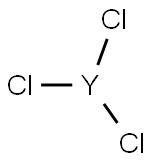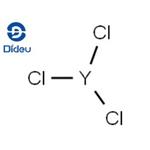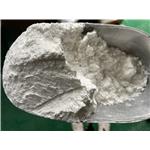Description
Yttrium(III) chloride is an inorganic compound of yttrium and chloride. It exists in two forms, the hydrate (YCl3(H2O)6) and an anhydrous form (YCl3). Both are colourless solids that are highly soluble in water and deliquescent.
Yttrium(III) chloride is used as a precursor for titanium-containing ceramics. It is used as an analytical reagent, as a catalyst and in superconductors. It is also used in the production of yttrium alkyl alkoxide complexes.
Chemical Properties
Reddish-white, transparent, deliquescent
prisms. D 2.18, decomposes at 100C. Soluble
in water and alcohol; insoluble in ether.
Acquired resistance
Yttrium(III) chloride, reacting with potassium alkoxotitanates, forms precursors for titanium-containing ceramics, It is used as an analytical reagent, as a catalyst and in superconductors. It is also used in the production of yttrium alkyl alkoxide complexes.
Uses
Yttrium chloride (YCl3) decomposes at the relatively low temperature of 100°C. This makes
it useful as a reagent in chemical laboratories.
Uses
Yttrium(III) chloride is used as a precursor for titanium-containing ceramics. It is used as an analytical reagent, as a catalyst and in superconductors. It is also used in the production of yttrium alkyl alkoxide complexes.
Flammability and Explosibility
Not classified
reaction suitability
reagent type: catalyst
core: yttrium
Safety Profile
Poison by
intraperitoneal route. When heated to
decomposition it emits toxic fumes of Cl-.
See also YTTRIUM and RARE EARTHS.






